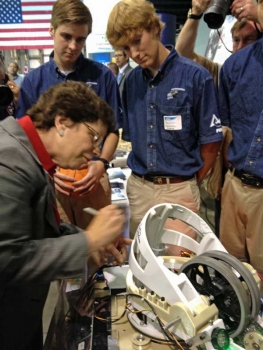International Traveler Spending On Pace For a Record Setting Year
Guest blog post by Acting Secretary of Commerce Rebecca Blank and Secretary of the Interior Ken Salazar
Travel and
tourism spending by international visitors is helping to boost the U.S.
economy. The U.S. Department of Commerce released data yesterday showing that
international visitors have spent an estimated $82.2 billion on U.S. travel and
tourism-related goods and services year to date, an increase of 11 percent when
compared to the same period last year. Many people do not know that this boosts
exports – when foreign citizens travel to America and buy goods and services
from American companies, that counts as a U.S. export. The new data indicate
that the first half of 2012 set a new record for U.S. travel and tourism
exports, and, if these trends continue, international visitors could end up
injecting close to $170 billion into the U.S. economy by year-end.
These increases help explain why the Obama administration is working hard to
make the United States the top destination for international travelers. The
U.S. Departments of Commerce and Interior are implementing the National Travel and
Tourism Strategy,
which they presented to the President
in May. The
National Strategy is a
blueprint for expanding travel to and within the U.S., setting out the goal of
attracting over 100 million international visitors annually by 2021, more than
a 50 percent increase over the number expected this year. These international
visitors would spend an estimated $250 billion per year, creating jobs and
spurring economic growth in communities across the country.











